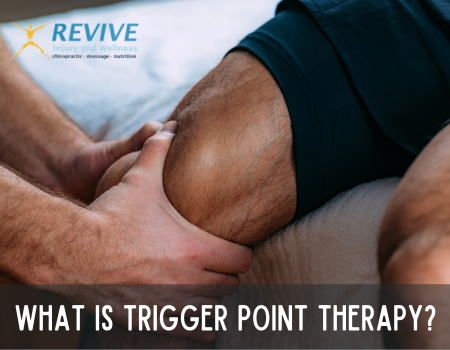In the realm of alternative and complementary therapies, trigger point therapy stands out as a valuable approach to alleviate muscle pain and dysfunction. Developed to address specific points of tension and discomfort within muscles, trigger point therapy has gained popularity for its effectiveness in managing various musculoskeletal issues. This article aims to demystify trigger point therapy, exploring its principles, techniques, and potential benefits.
Understanding Trigger Point Therapy

What Are Trigger Points?
Trigger points are localized knots or tight spots within a muscle that can be sensitive to the touch. These points often develop due to muscle overuse, strain, or injury, leading to the formation of taut bands of muscle fibers. Trigger points can cause pain, restrict range of motion, and even refer pain to other areas of the body.
The Principles of Trigger Point Therapy:
1. Identification of Trigger Points:
– Trigger point therapy begins with the identification of specific trigger points. Practitioners often rely on palpation and patient feedback to locate these areas of tension.
- Focused Pressure:
– The hallmark of trigger point therapy is the application of sustained pressure to the identified trigger points. This pressure helps release the tension in the muscle fibers and promotes blood flow to the affected area.
3. Myofascial Release:
– Trigger point therapy often involves myofascial release techniques. Fascia, the connective tissue surrounding muscles, can become tight and restrict movement. By applying pressure and releasing tension in the fascia, practitioners aim to restore flexibility and alleviate pain.
Techniques Used in Trigger Point Therapy:
1. Direct Pressure:
– The therapist uses their fingers, thumbs, or specialized tools to apply direct pressure to the trigger point. This helps release the tension and encourages the muscle to relax.
2. Stretching:
– Gentle stretching of the affected muscle is often incorporated to enhance the effects of trigger point therapy. Stretching helps improve flexibility and prevent the recurrence of trigger points.
3. Heat Therapy:
– Heat may be applied to the muscles before trigger point therapy to increase blood flow, relax the muscles, and make them more receptive to treatment.
4. Dry Needling:
– In some cases, practitioners may use dry needling, a technique that involves inserting thin needles into the trigger points to stimulate the release of tension. It’s important to note that while similar to acupuncture, dry needling focuses specifically on trigger points.
Benefits of Therapy:
1. Pain Relief:
– One of the primary benefits of trigger point therapy is pain relief. By releasing tension in specific muscle areas, individuals often experience a significant reduction in localized pain.
2. Improved Range of Motion:
– Trigger point therapy can enhance flexibility and improve range of motion. This is particularly beneficial for individuals dealing with chronic conditions or injuries that have led to muscle tightness.
3. Reduced Muscle Tension:
– The targeted pressure applied during trigger point therapy helps reduce overall muscle tension, promoting relaxation and a sense of well-being.
4. Prevention of Chronic Pain:
– Regular sessions of trigger point therapy may aid in preventing the development of chronic pain conditions by addressing muscular issues before they escalate.
Who Can Benefit from Therapy?
1. Athletes:
– Athletes often use trigger point therapy to address muscle imbalances, enhance performance, and accelerate recovery from injuries.
2. Office Workers:
– Individuals with sedentary jobs may experience tension and pain in areas like the neck, shoulders, and lower back. Trigger point therapy can provide relief from these issues.
3. Chronic Pain Sufferers:
– People dealing with chronic pain conditions, such as fibromyalgia or tension headaches, may find relief through the targeted approach of trigger point therapy.
4. Post-Surgery Patients:
– Post-surgery patients often experience muscle tightness or imbalances. Trigger point therapy can be part of a rehabilitation program to address these issues and improve recovery.
Trigger point therapy offers a targeted and effective approach to managing muscle pain and dysfunction. By addressing specific points of tension, this therapy promotes pain relief, improved flexibility, and an overall sense of well-being. Whether used as a standalone treatment or as part of a comprehensive wellness plan, trigger point therapy has demonstrated its value in enhancing musculoskeletal health and providing relief for a variety of individuals, from athletes to those dealing with chronic pain conditions. As with any therapeutic approach, it’s advisable to consult with a qualified healthcare professional or certified therapist to determine the suitability of trigger point therapy for individual needs.
More on Our Services
Ergonomics, Posture and Chiropractic Health
5 Questions to Ask Your Chiropractor About Neck Pain
How to Choose the Right Chiropractor
5 Things to Consider When Dealing with Neck Injuries
Is a Chiropractor Visit Scary?
How Soon After a Car Accident Should You Visit a Chiropractor?


